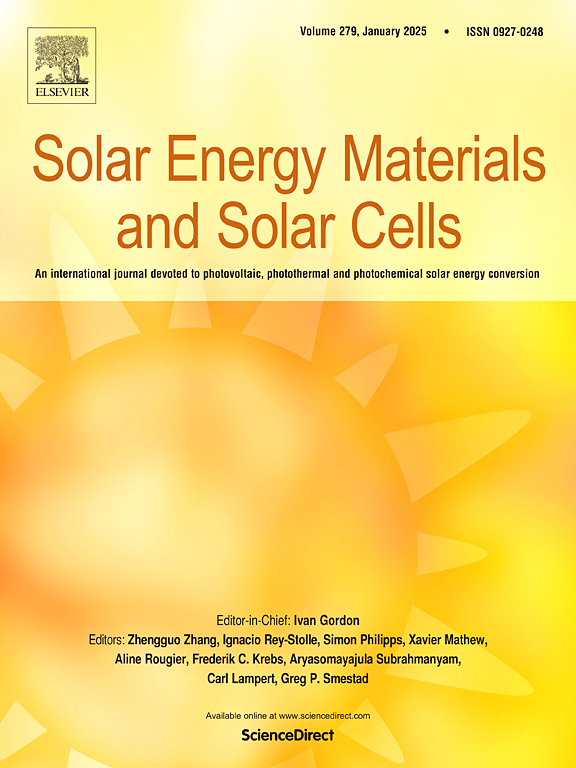Fundamental advantages of multijunction thermophotovoltaic cells
IF 6.3
2区 材料科学
Q2 ENERGY & FUELS
引用次数: 0
Abstract
In this paper, we examine some basic advantages of multijunction cells used for thermophotovoltaics (TPV), in terms of greater fraction of spectrum used, reduced carrier thermalization losses, and reduced series resistance. We find that increasing the fraction of the thermal spectrum used with tandem TPV cells is important in real-world TPV systems where there are non-ideal optical losses. The lower currents and higher voltages of 2-junction and 4-junction TPV cells modeled here compared to single-junction cells result in substantially lower series resistance losses. Considering one potentially significant disadvantage of series-connected multijunction cells – the need for subcell current matching – we also examine the effect of 2-junction and 4-junction TPV cells on the practical depth of discharge of thermal batteries, and the energy that can be extracted from each thermal charge.

多结热光伏电池的基本优势
在本文中,我们研究了用于热光伏(TPV)的多结电池的一些基本优点,包括更大比例的频谱使用,减少载流子热化损耗和减少串联电阻。我们发现,在存在非理想光学损耗的实际TPV系统中,增加串联TPV电池使用的热光谱的比例是重要的。与单结电池相比,这里建模的2结和4结TPV电池具有更低的电流和更高的电压,从而大大降低了串联电阻损失。考虑到串联多结电池的一个潜在的重大缺点-需要亚电池电流匹配-我们还研究了2结和4结TPV电池对热电池实际放电深度的影响,以及可以从每次热充电中提取的能量。
本文章由计算机程序翻译,如有差异,请以英文原文为准。
求助全文
约1分钟内获得全文
求助全文
来源期刊

Solar Energy Materials and Solar Cells
工程技术-材料科学:综合
CiteScore
12.60
自引率
11.60%
发文量
513
审稿时长
47 days
期刊介绍:
Solar Energy Materials & Solar Cells is intended as a vehicle for the dissemination of research results on materials science and technology related to photovoltaic, photothermal and photoelectrochemical solar energy conversion. Materials science is taken in the broadest possible sense and encompasses physics, chemistry, optics, materials fabrication and analysis for all types of materials.
 求助内容:
求助内容: 应助结果提醒方式:
应助结果提醒方式:


